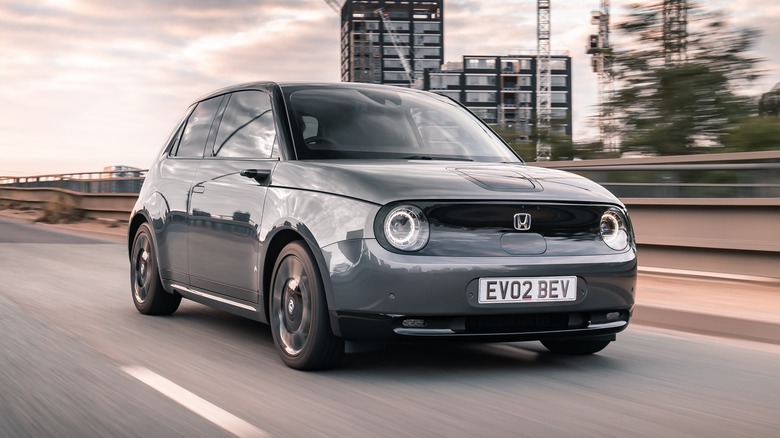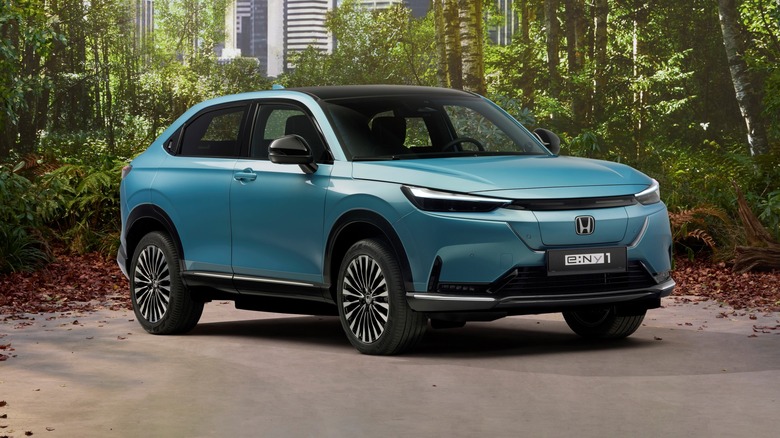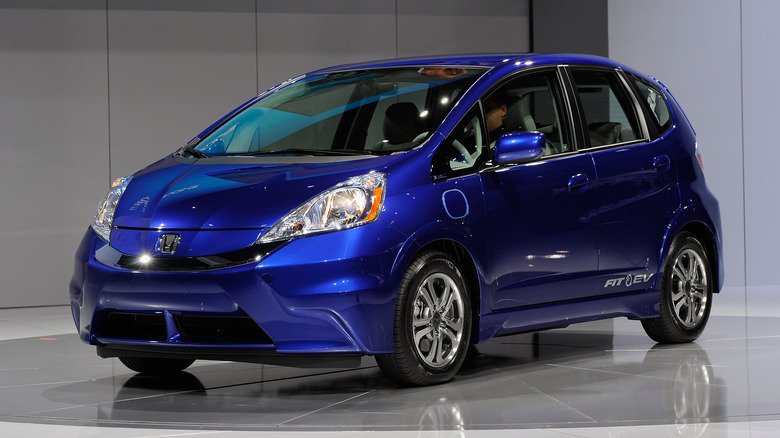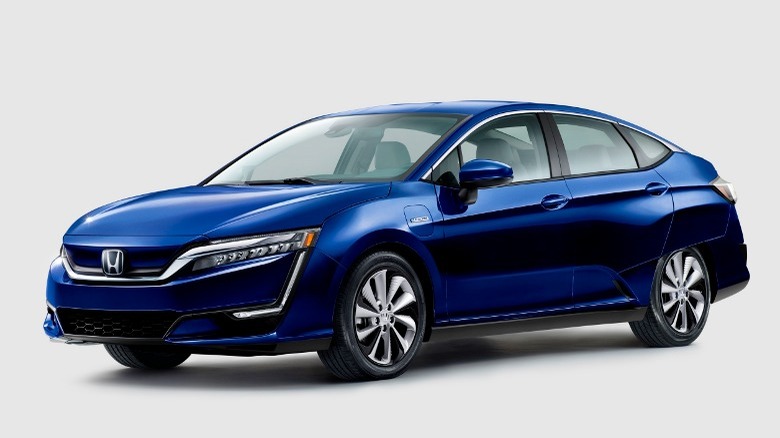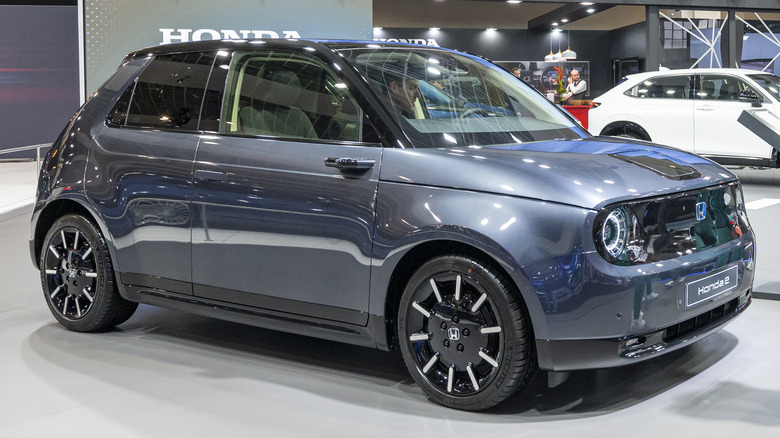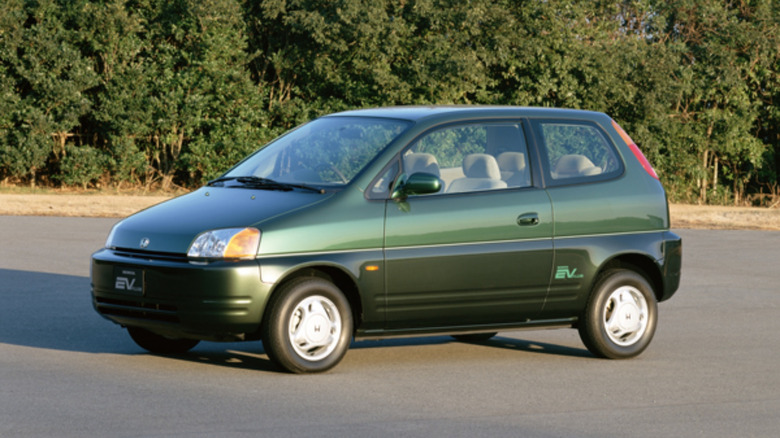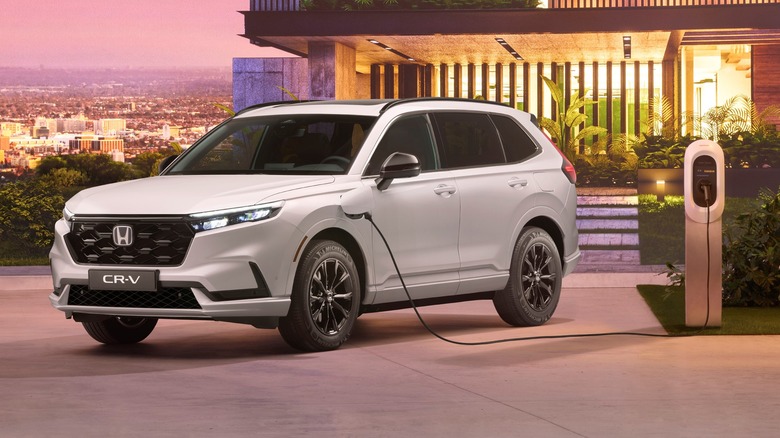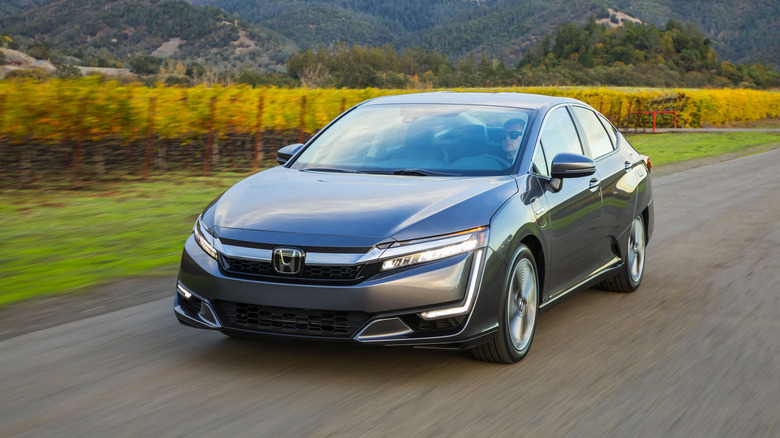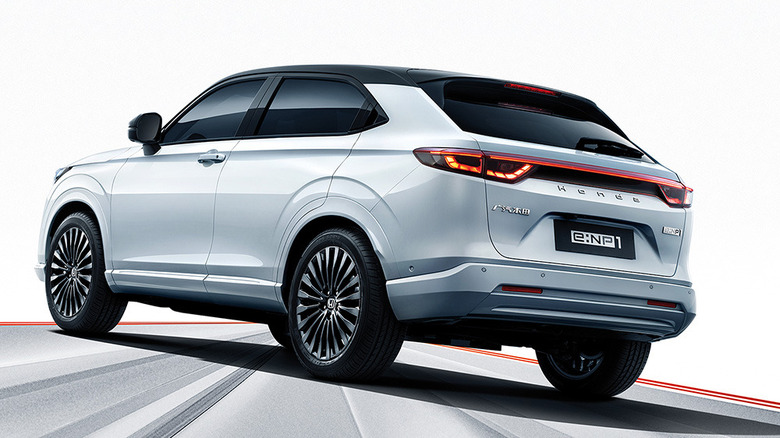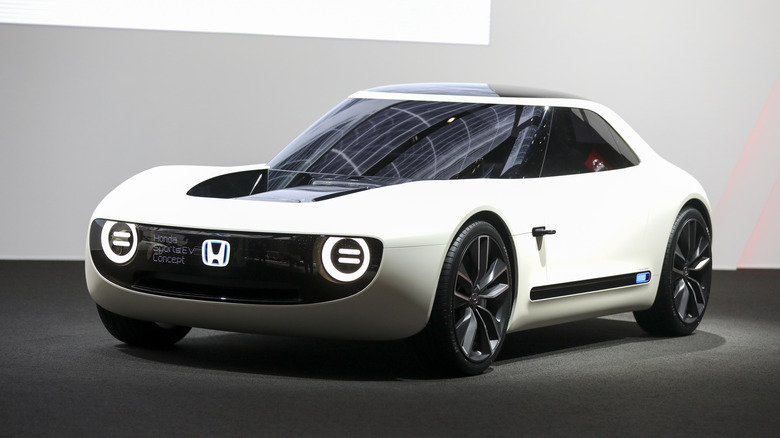8 Best Honda Electric Cars Ever Made
Honda has been developing electric vehicles in some form or another since 1988, and its first EV was launched in 1997. Since those early days, the company has been slower than many of its rivals in developing competitive EVs, with most of its electrified efforts being mild hybrids rather than BEVs or plug-in hybrids. In the last few years, however, Honda has caught up to the idea that electric vehicles represent not only the future of the industry but an increasing proportion of global car sales.
Spurred on by higher demand for EVs in Europe and China, the automaker recently launched its first mass-produced battery electric vehicles, and it's promised that more are on the way soon. Controversially, it seems like the U.S. might miss out on some of them, although Honda's luxury arm Acura is set to offer BEVs starting in 2024. With a bevy of Honda EVs imminent, it's a good time to take a look through the Japanese carmaker's back catalog to commemorate its best EVs from both the past and present.
Honda e:NY1
Honda's latest EV is also set to be one of its best yet, although it's not destined for U.S. shores for now. The e:NY1 is based on Honda's new e:N Architecture F platform, which will spawn a range of battery-electric EVs over the coming years. The crossover SUV makes a respectable 201 horsepower and 229 pound-feet of torque, with an official WLTP range of 256 miles. The latter figure isn't class-leading, but it's significantly better than most of Honda's previous EV efforts.
Honda claims it will take 45 minutes to charge the car from 10% to 80% on a 100kW charger. The automaker's European rollout of BEVs has been slower than many of its rivals, but the president of its Europe division recently defended that decision in an interview with Autocar, saying there was no rush because electric charging infrastructure wasn't adequate yet in many places. The e:NY1 is built specifically for the European market, with two similar models already on sale in China. As charging infrastructure becomes more widespread in the U.S., there's a good chance Honda's BEV range will eventually be brought over, but for now, it remains out of reach.
Honda Fit EV
Launched in 2012, the Honda Fit EV was only available to lease on a three-year term for $389 per month. It was only the company's second-ever production BEV, and a total of 1,100 units were built. The car proved to be so popular that production ended earlier than expected as Honda had met its quota, with waiting lists for the car persistent throughout its time on sale. It boasted an EPA-certified adjusted range of 82 miles, a respectable figure at the time.
Compared to its rivals, the Fit EV was not only better to drive, but one of the most practical cars in the segment too. Its 123 horsepower output was roughly on par with a gas-powered Fit, and it featured the same roomy cabin as its conventionally-fueled counterpart. Sadly, the car was built primarily as a "compliance car" to satisfy California's laws around zero-emissions vehicles, and so once Honda built enough to meet regulatory minimums, the Fit EV was axed without a direct successor, despite sustained levels of high interest from buyers.
Honda Clarity Electric
Despite the U.S. being one of the original markets for its EVs thanks to the California zero-emissions mandate, Honda has trailed behind American manufacturers like Tesla and GM in EV development. A good example of this is the Honda Clarity Electric: It launched the sedan in 2016 with a 161 horsepower motor and a 25.5kWh battery, and only offered it as a lease in California and Oregon. After several years of low sales, it axed the Clarity Electric altogether in 2020, leaving Honda without an all-electric vehicle in its lineup.
The biggest flaw with the car was its limited range: it was only capable of traveling 89 miles between charges. For context, the 2016 Tesla Model S offered at least 210 miles of range even in base-spec form, while the Chevy Bolt offered 238 miles. Other than that, the Clarity Electric was an impressive car, with an interior that was a cut above anything else in Honda's lineup, and a smooth, refined ride. Unfortunately, it was doomed by its limited range, even if it was Honda's best all-electric effort up to that point.
Honda e
The e is arguably Honda's best-looking EV to date, with a retro-modern design and a single standard color option of Charge Yellow (other, less bright colors are available at an extra cost). When reservations for the car opened in 2019, its techy interior was completely unique, with futuristic touches like cameras instead of conventional mirrors and screens stretching right across the width of the cabin. The only real flaw with the car was its limited range — something that's a common theme across all of Honda's BEVs.
Its official range is 137 miles, but a long-term review by Auto Express found the car's actual range was lower, with only 90-120 miles available between charges. The e isn't designed for cross-country travel, but rather for congested European city centers, and in that context, some would argue its range is more than adequate. However, the 2023 model in the U.K. starts at £37,395 (roughly $46,600), only a few thousand pounds short of the base-spec Tesla Model 3, which costs £42,990 (around $53,700). The Model 3 boasts 305 miles of WLTP range, nearly three times that of the Honda. After three years on sale, the e's high asking price and underwhelming range have meant it's not been the sales success Honda was hoping for, despite its charms.
Honda EV Plus
The first ever production Honda EV was launched in 1997, the culmination of a development program that had started almost 10 years prior. Like many electric vehicles of its era, the EV Plus was designed to be a "compliance car" to satisfy California's zero-emissions mandate, and as a result, it was only produced in very low numbers — it's thought just 330 were built. Estimated range stood between 60 and 80 miles depending on how carefully you drove the car, and top speed was claimed to be "over" 80 mph.
Early adopters of any new technology usually pay a premium for the privilege, and the EV Plus was no different. There was no way to buy the car outright, although its sticker price was officially listed as $53,900. For context, that's around $101,000 adjusting for inflation. Instead, buyers could only lease the car from Honda for $455 a month. After the three-year lease period finished, California's zero-emissions mandate had been slackened, and so Honda decided there was no need to continue developing BEVs. The company pivoted to developing hybrids instead, and every example of the EV Plus was eventually reclaimed by Honda and destroyed.
Honda CR-V PHEV
Although Honda has decided not to launch new plug-in hybrid EVs in the U.S., it is still developing them for other markets. Unveiled alongside the e:NY1, the 2023 CR-V PHEV is set to go on sale imminently in Europe, with an almost identical look to the American-market CR-V. However, the U.S.-spec hybrid CR-V can't run on electric power alone, while the Euro plug-in car sports an all-electric range of up to 50 miles.
Honda claims the battery can be charged from empty to 100% in under 2.5 hours, and that the majority of journeys buyers of the CR-V will make can be completed on electric power. Powertrain aside, the CR-V features Honda's updated cabin and retains the winning combination of practicality and comfort that made the previous five generations of the car a hit with buyers. Unfortunately for American buyers, it seems like Honda has already made up its mind to stick with mild hybrids in the U.S. for the foreseeable future, so don't expect the CR-V PHEV to make its way over anytime soon.
Honda Clarity PHEV
While the Honda Clarity Electric's appeal was dimmed by its short range, the Clarity PHEV suffered no such issues. However, Honda still had a hard time convincing buyers to choose one, and as a result, it was axed alongside the hydrogen fuel-cell variant in 2021. That was despite only launching for the 2018 model year, with an all-electric range of 42 miles and a 1.5-liter gas engine to push the car's full range up to 330 miles. Charging the battery took around 2.5 hours on a 240V supply.
With a combined 181 horsepower and 232 pound-feet of torque, the Clarity PHEV's performance was reasonable for its segment, if never very exciting. Its design was divisive and likely put some buyers off, with the partially-covered rear wheels often being cited as a particularly poor styling choice on Honda's part. Still, looks aside, the Clarity PHEV was a competent plug-in with an upmarket interior, making it comfortably one of Honda's best EVs even if buyers weren't convinced.
Honda e:NP1
In 2022, Honda unveiled a pair of all-electric SUVs for the Chinese market, the first under its new e:N sub-brand. The cheaper of the two was the e:NP1, a sub-$30,000 crossover with 260 miles of range. An extended-range version was also available for a little over $30,000, claiming 316 miles of range. At launch, Honda stated that it was planning to expand the e:N lineup to 10 models by 2027, with two new dedicated production facilities to build the range that will be fully operational by 2024.
There has been no news on whether Honda plans to launch the e:NP1 outside of China, or whether it'll focus on pricier, higher-margin models instead. The recent unveiling of the Euro-spec e:NY1 proves Honda intends to launch the e:N sub-brand in a variety of markets, but whether it'll come to the U.S. remains to be seen. However, if it did make it Stateside at a similar price point, the e:NP1 would provide some tough competition to the current EVs on the market.
Honda's electric future
Although Honda's electric car output has been relatively modest so far, it's unlikely to stay that way for long. In 2022, it was revealed that Honda and GM had formed a partnership to develop affordable EVs based on GM's Ultium platform, with the first models launching in 2027. The Japanese automaker has also teamed up with Sony on a new EV brand called Afeela, with the brand's first cars expected to be delivered in 2026. Before those hit the market, the 2024 Prologue has already been announced as the brand's first American all-electric SUV, although details remain scant so far. Another, as-yet-unnamed electric SUV will hit the market the following year, it was recently announced. To keep enthusiasts happy, Honda is planning to release two EV sports cars too, with one potentially being a production version of the EV Sports concept, pictured above.
That's in addition to Honda's ongoing partnerships in the Chinese auto market, which as previously mentioned, will launch 10 models under the e:N brand by 2027. Honda's COO has been upfront about how the company is lagging behind in the race to capture the world's biggest EV market, stating frankly that at the 2023 Shanghai Auto Show, "We were overwhelmed by the Chinese [automakers]." Clearly, executives recognize that the company's efforts towards electrification up to this point have not been enough to compete, and over the next decade or so, a radical transformation is set to take place across the brand's global lineup. It's almost certain, then, that the best is yet to come for Honda's EV range.
